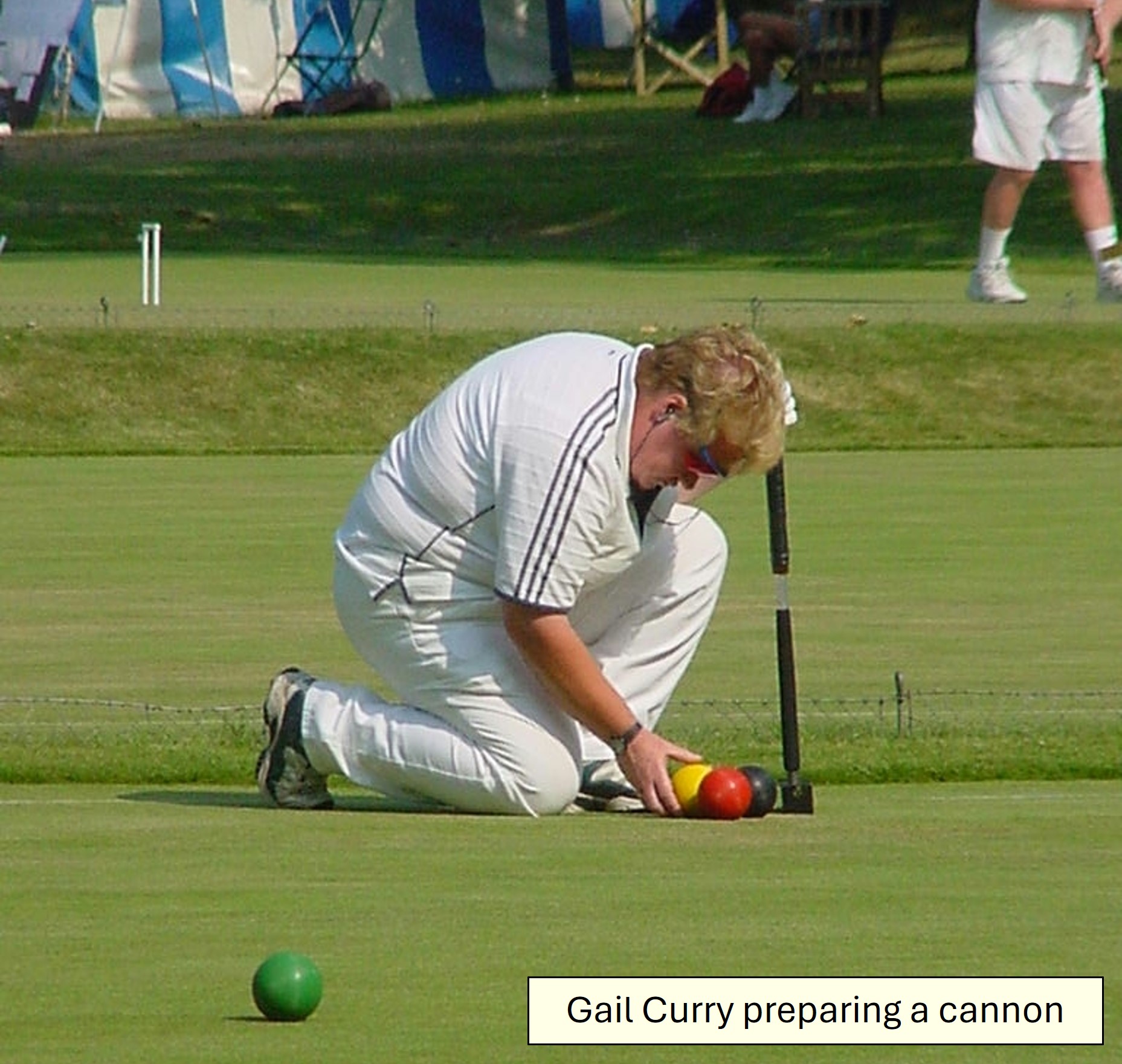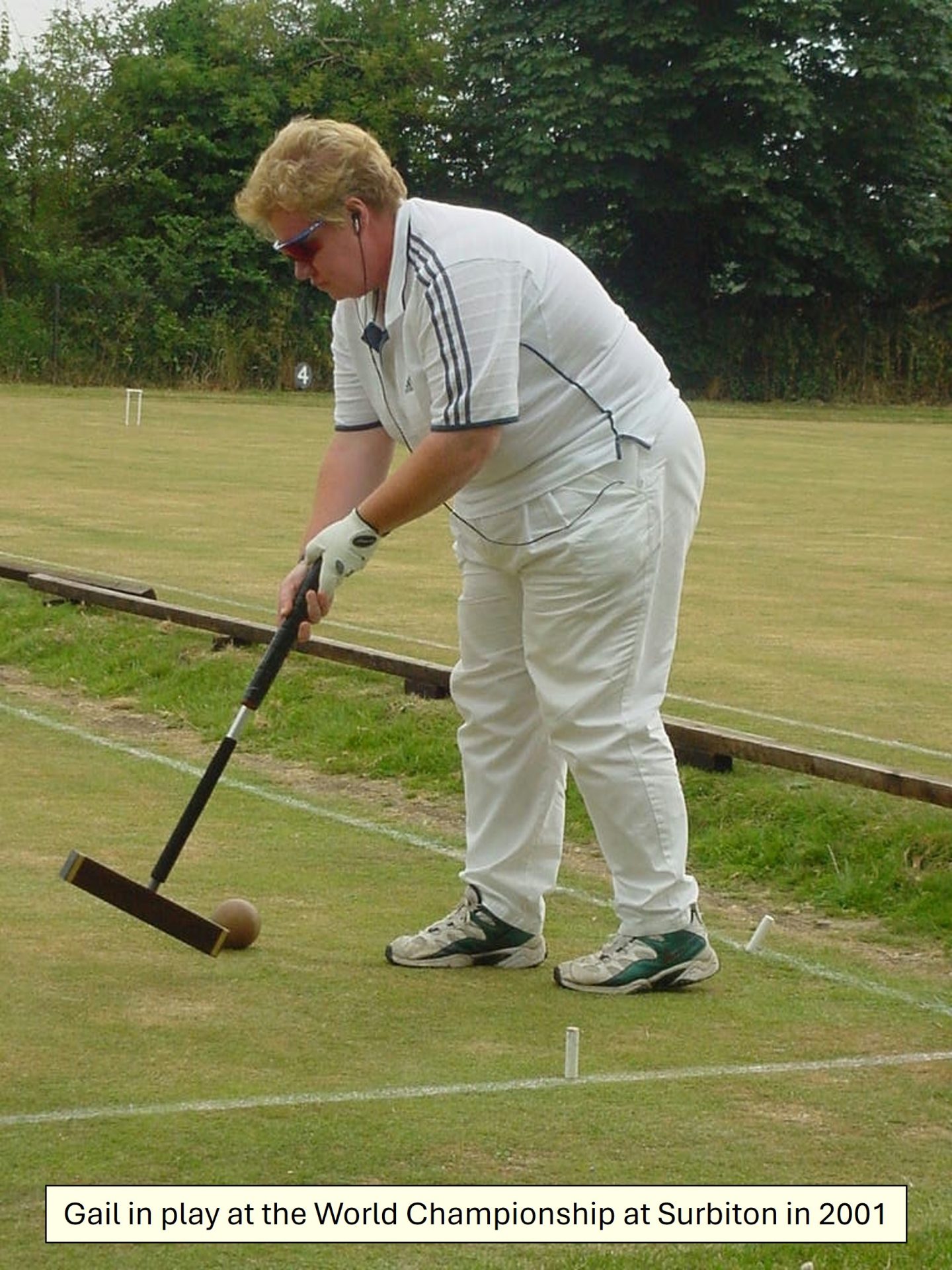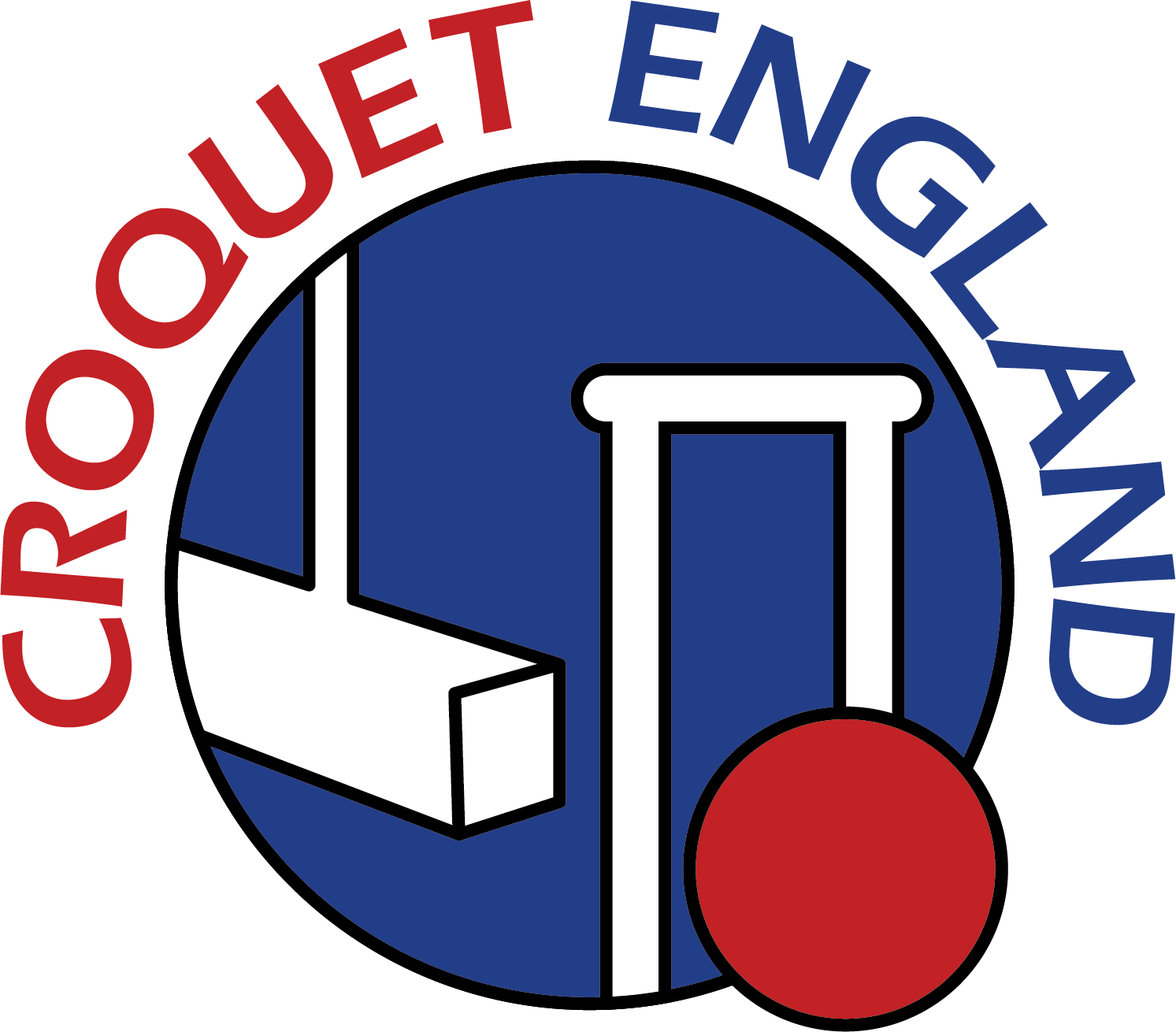
Celebrating Women in History Month with great croquet players from the past – Gail Curry
Gail Curry is the last in our short series about women in croquet history. Taking up croquet in 1987, her success came in the last decade of the twentieth century. Gail has written this article herself.
“My first venture into croquet was in my mid-twenties or thereabouts. I was busy playing hockey and table tennis but my mother had seen an advert for the local club at Tyneside to ‘come and try croquet’, so I said would go with her. At the end of the six weekly coaching sessions, I was beating the coaches and my mother had lost interest.
During that first winter I remember reading Cotter and Solomon and the following spring had a sound understanding of the game in my head, which meant I could focus my attention on actually playing the strokes. That, plus the already good hand eye co-ordination from other sports, gave me a great platform to start from.
I could often be found practising at the club on my own in the early days and played as part of the club team in both the Northern and Confederation leagues, which stretched from as far west as Chester and south to Manchester.
As far as I recall my first handicap tournament was at Bowdon, handicap 10. I whitewashed poor Colin Wild with 8 bisques left in the ground and left Manchester with a trophy and a new handicap of 7.
Not long after that I returned to Ellesmere Club, also in Manchester, where they played on a crown bowling green. I whitewashed the formidable ex-ladies champion Pat Hague on her home lawn with bisques remaining again. She shook my hand and then put her hands on her hips and said “if you’re a bloody 7 I’m a monkeys uncle”. I left Ellesmere as a 5 having also won the doubles.
In the days when the handicap change was in the hands of handicappers alone, some players didn’t react well to be being cut, but for me it was pure reward. I am a competitive person by nature, so had set myself the target of being a scratch player.
I knew that within a couple of years that was going to be difficult, living in the North East of England, when the nearest CA tournament at that time was in Southport/Bowdon. I also lacked competition at my own club with only one or two players who could challenge me. Fortunately, one of those was David Appleton, who gave me sound advice, was a solid adversary and eventually introduced me to championship play by partnering me in the mixed doubles at the Men’s and Women’s Championships. We didn’t do particularly well but I was thankful to him for my first exposure to best of three, which taught me I needed to improve my concentration.
I eventually joined Southport club as a far country member and would often travel there on non-tournament weekends to play and practice with my new doubles partner and friend John Haslam, plus the Saurin bothers and others who were a challenge. I even did the 360 mile round trip in a day at times to play at a level I needed to improve.
I eventually played for Lancashire in the inter-counties as there was no Northumberland team at that time. However, I remedied that, found fellow exiled Geordies and we took the trophy, which is one of my fondest memories.
I found events like that especially helpful in being able to watch the best players and learn from them.
While all of this was happening I had also started a somewhat satirical croquet magazine, Taking the Bisque, which poked fun at the stuffiness of the Gazette at that time. Eventually Stephen Mulliner asked me if I was prepared to put my money where my mouth was and edit the Gazette, I accepted. In taking on that role I did limit my own playing time, as it was time consuming and as time passed became a burden. Why did I eventually take the role on for a second time? …… I often ask myself the same question.
However, at some point in the early 1990s I did become a scratch player. I had won several events and the triple peel was now also part of my play. Unfortunately, in 1994 I broke my wrist while playing in the Women’s Championship, while attempting to hit a cut rush very hard from corner 4. I missed the ball and hit the hardened ground instead. Recovery was slow and in the end I lost my confidence playing with Solomon grip so changed to Irish grip with a very short mallet. That change took time to recover my level of play but I did it and while I was recovering I read Wylie.
I set my sights on playing in a world championship and being the first woman to complete a sextuple in competitive play. I have always set myself challenges in sport and in life.
I played in the world championship in London in 2001 and enjoyed that immensely. Although I didn’t perhaps perform at my best, I was awarded a trophy, the fun cup. This was given to me following a win against Stephen Mulliner. Tony Hall, Mr WCF at the time, asked what I had for breakfast that day, I replied, ‘Mulliner’. (Sorry Stephen.)
Eventually the sextuple arrived, at Budleigh Salterton in 2001 where I punished Lionel Tibble for breaking down at 1-back by peeling him out of the game. The lawn was far from perfect, but the hoops had been set well as I was managing the event. It was one of those rare moments of being so in the zone mentally and physically I never doubted I could do it. I was completely unaware of the crowd gathering around the lawn and so when I finished the straight triple and pegged out his ball the applause completely took me by surprise.
What disappointed me were the early comments on the Nottingham list after my win and feat were reported. Instead of simple congratulations there were comments about had it been a ‘ladies sextuple’ meaning it was started with the ball in the jaws of the hoop, as well as ‘hoops like gateposts’. That summed up a decade of attitude for me.
While it was great that I had achieved everything I had set out to do and had a handicap of -1.5 at my best, I couldn’t then find a challenge to maintain my interest. I felt I had given my best, so gave up playing as I couldn’t think of a reason to continue.
I don’t miss playing, I miss the friends I made and the laughter that was often never far away, occasionally I go and spectate somewhere, but there are no plans to pick up a mallet again, I have new challenges to enjoy now.”
Gail’s croquet achievements include winning the Women’s Championship six times, the Mixed Doubles twice, the Barlow Bowl (the successor to the Ladies Field Cup) 10 times between 1990 and 2001, and being awarded the Steel Memorial Bowl for most improved female player in 2000. Her sextuple in 2001 is believed to be the first completed by a woman and is a rare example of a SXPO (sextuple on opponent).
An interview with Gail was published in the Gazette May 2001, page 16, as she handed over as editor of the Gazette.


